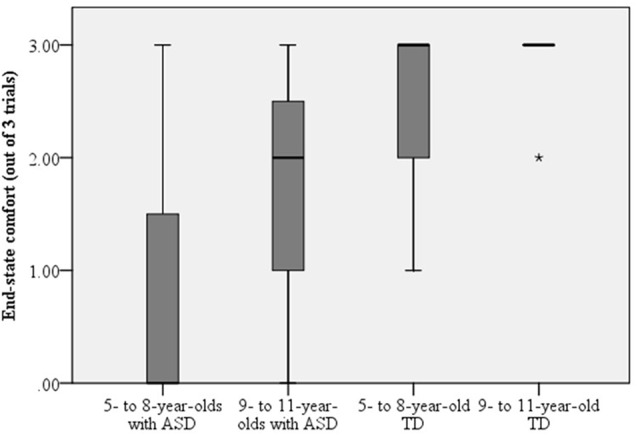Figure 3.

Evidence of end-state comfort differed between 9- to 11-year-old typically-developing children and 5- to 8-year-olds with ASD, such that typically-developing 9 to 11-year-olds displayed more end-state comfort. In addition, the comparison between 5- to 8-year-olds with ASD and their typically-developing peers, and between 9- to 11-year-olds with ASD and their typically-developing counterparts were approaching statistically significant differences. Dark lines represent the mean and the *represents an outlier in the data.
